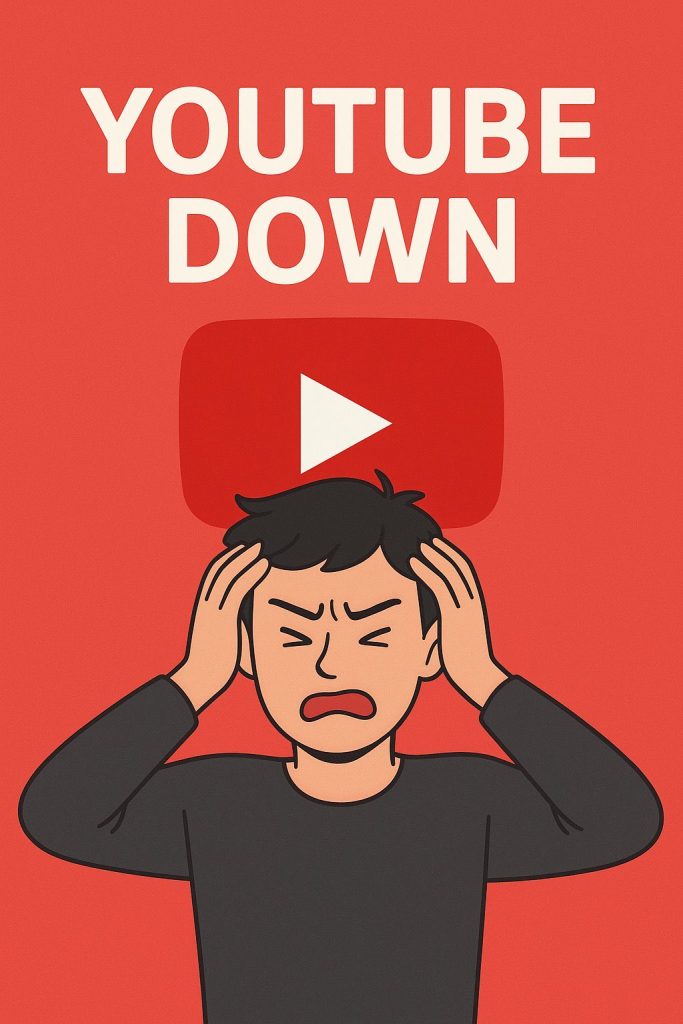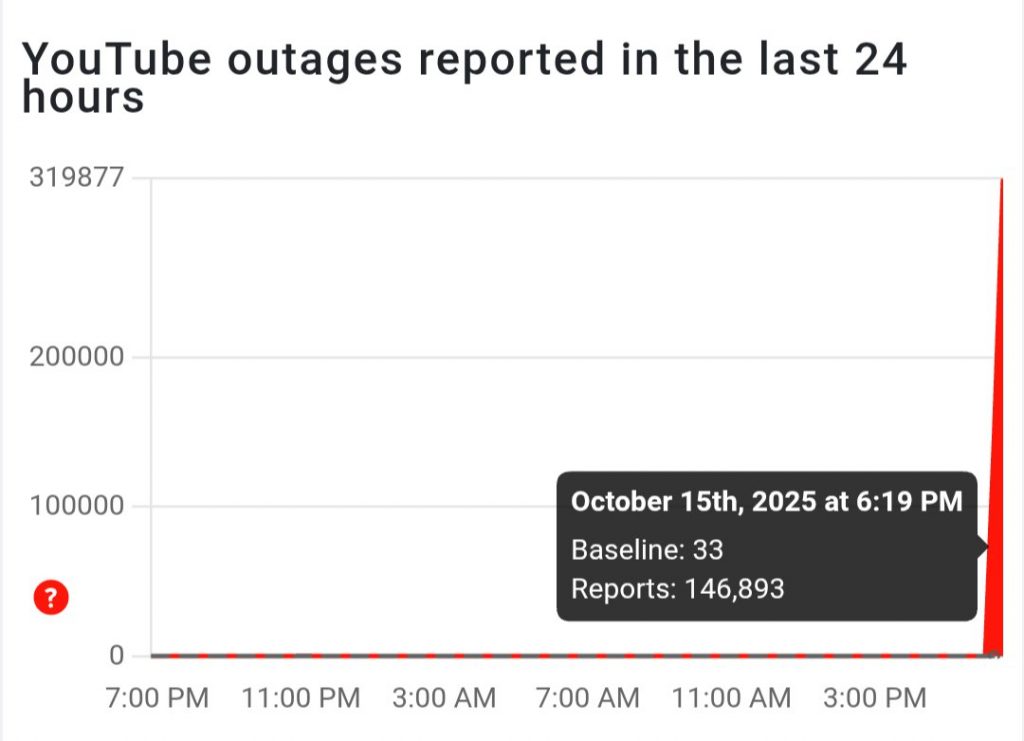Silence of the Servers: A Global YouTube Outage Shocks the Digital World

In an unexpected and dramatic halt to the rhythm of global digital life, YouTube, the undisputed titan of online video, fell silent today, experiencing a widespread, worldwide outage that has left millions of users staring at blank screens, endless loading icons, and frustrating “Playback error” messages.
The disruption, which began early this morning (or late last night depending on your time zone), has effectively pulled the plug on the planet’s primary source of video content, triggering an avalanche of complaints, jokes, and existential digital dread across every other functioning social media platform.
The scale of the outage is immediately apparent. Reports from monitoring services like DownDetector have registered hundreds of thousands of user reports within the first hours, with the impact map glowing red across North America, Europe, Asia, and Australia.
This is no localized glitch or regional server hiccup; this is a systemic, global failure hitting the core infrastructure of one of the world’s most-visited websites.
The issues appear to span all of YouTube’s properties, including the main site, the mobile app, YouTube Music, and YouTube TV, confirming that the root cause is deep within Google’s own network or systems.
For the casual viewer, the outage is an inconvenience—a momentary shock to the system that forces them to find an alternative way to fill their commute, lunch break, or evening wind-down routine. They turn to TikTok, Netflix, or even, in a desperate throwback to a bygone era, a book.
Yet, the broader implications of this sudden, massive downtime are far more serious, highlighting a profound societal and economic dependence on the platform.
The Economic and Creative Vacuum

The most immediate and severe impact is on the millions of content creators, businesses, and educators who rely on YouTube for their livelihoods and their reach.
For professional YouTubers, every hour the platform is down is an hour of lost ad revenue, lost engagement, and a disruption to meticulously planned upload schedules.
A single day of global outage can translate into a significant financial hit for those who depend on consistent views and monetization to pay their bills.
Educational and news organizations are also feeling the pinch. YouTube has become a crucial repository for instructional videos, documentaries, and live news coverage.
Students seeking tutorials, professionals updating skills, and citizens following breaking events are all currently blocked from accessing this vast library of knowledge.
In a world increasingly turning to video for information delivery, this outage represents a temporary, yet stark, information blackout.
Businesses, too, suffer a ripple effect. Companies that use YouTube for customer support, product launches, or large-scale advertising campaigns have had their carefully scheduled messaging disappear into the digital ether.
The planned video announcement, the pre-roll ad, the live Q&A—all are suddenly inaccessible, forcing swift, often costly, pivots to alternative, lower-impact channels.
The “Is It Just Me?” Panic

In the immediate aftermath of the initial reports, the global reaction played out a familiar scenario on social media, especially X (formerly Twitter).
The hashtags #YouTubeDown and #YouTubeOutage quickly began trending as users around the world engaged in the ritualistic digital confirmation of a shared problem.
“I thought it was my Wi-Fi!” was the common refrain, quickly followed by “Wait, it’s the whole world?!” This initial panic gives way to a collective, if frustrated, community experience.
Memes quickly spring up, turning the error messages and black screens into viral jokes. The absence of the world’s constant video soundtrack forces a peculiar moment of global, albeit temporary, digital solidarity.
The Root Cause: A Developing Story

As of yet, Google, YouTube’s parent company, has not released an official, detailed statement explaining the cause of the outage.
Early speculation within the tech community ranges from a major server configuration error, an infrastructure failure, to a potential, though unconfirmed, cybersecurity incident.
Given the scale and simultaneous nature of the failure, an issue at the core of Google’s global content delivery network (CDN) or a fundamental routing problem seems the most likely culprit.
The incident serves as a powerful reminder of the fragility inherent in a highly centralized digital ecosystem. When one platform holds such a dominant position in video, its failure creates a void that no other competitor can instantly fill.
For now, the world waits for the return of the loading bar. The outage acts as a strange, unbidden digital detox for some, and a major headache for others.
But one thing is certain: when YouTube’s servers finally flicker back to life, the collective, global sigh of relief will be audible across the internet, signaling the return to the default state of digital normalcy.
Until then, we are all left to contemplate a world without a constant, immediate stream of cat videos, news clips, and tutorial guides. The silence is deafening.








